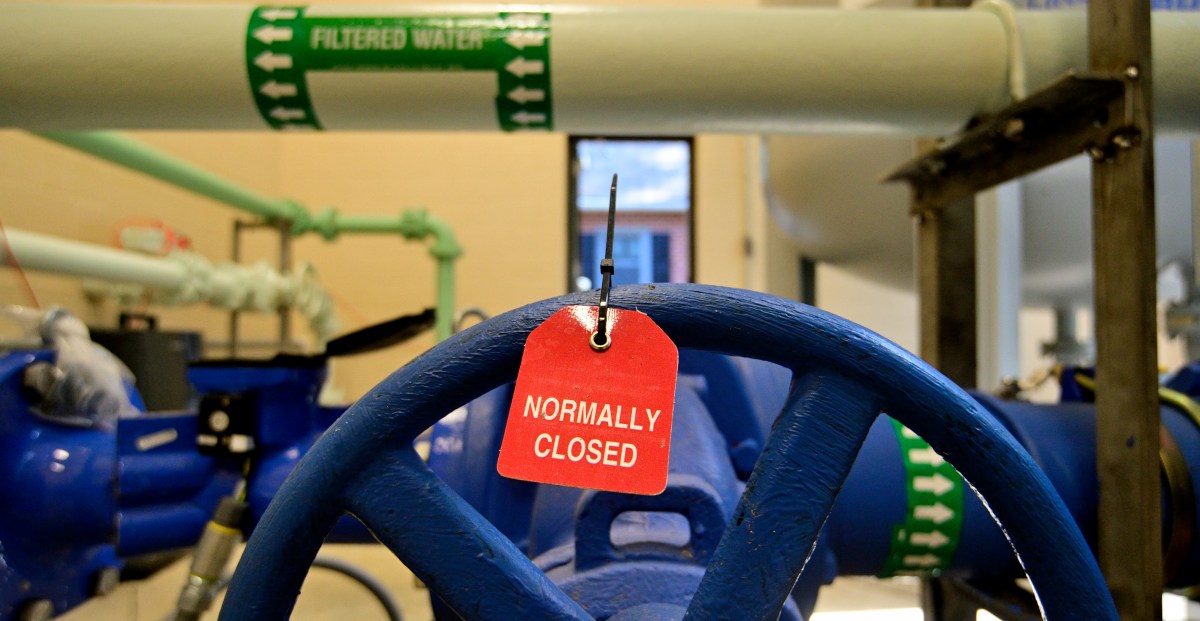 Part of a filtration system designed to filter out forever chemicals from a drinking water supply in Pennsylvania in 2019. | Photo: Getty Images
Part of a filtration system designed to filter out forever chemicals from a drinking water supply in Pennsylvania in 2019. | Photo: Getty Images
The Trump administration plans to weaken drinking water rules meant to protect Americans from “forever chemicals” that have been linked to cancer, reproductive risks, liver damage, and other health issues.
Last year, the Environmental Protection Agency (EPA) finalized the nation’s first legally enforceable federal drinking water limits on the most common types of forever chemicals. Today, the EPA announced an about-face. The agency now wants to exclude several types of the chemicals from the rule, including so-called GenX substances initially intended to replace older versions of forever chemicals but that ended up creating new concerns. It also proposed extending compliance deadlines for the two most prevalent forms of forever chemicals, and says it’ll establish a “framework” for more exemptions.
Health and environmental advocates slammed the proposed exclusions and enforcement delays as a threat to Americans. “Today’s decision is a shameful and dangerous capitulation to industry pressure that will allow continued contamination of our drinking water,” Mary Grant, water program director at the nonprofit Food & Water Watch said in a press statement. “This will cost lives.”
“A shameful and dangerous capitulation to industry pressure”
There are thousands of different types of forever chemicals, also known as per- and polyfluoroalkyl substances (PFAS). Companies have used them for decades to make products such as nonstick pans, food packaging, and fabric protector water, stain, and heat-resistant. As a result, forever chemicals are estimated to have trickled into at least 45 percent of the nation’s tap water and are present in most Americans’ blood streams.
The Biden-era standards set limits for just five widely used types of chemicals: PFOA, PFOS, PFNA, PFHxS, and HFPO-DA (also known as “GenX Chemicals”), plus mixtures of several chemicals, including perfluorobutane sulfonic acid (PFBS), found in floor wax, carpeting, and carpet cleaners.
Some manufacturers have already pledged to stop using PFAS after facing a slew of lawsuits. The company 3M agreed to a $450 million settlement with the state of New Jersey on Tuesday over PFAS pollution.
In April, the EPA said it would launch new efforts to study the chemicals and consider guidelines to limit pollution from manufacturers. At the time, advocacy groups were wary that the agency might simply delay action by calling for more studies — especially as the Trump administration attempts to slash the agency’s staff, budget, and research department. Advocates have been pushing for drinking water limits since President Donald Trump’s first term as a growing body of evidence pointed to the health risks.
Now, it’s clear the agency doesn’t want to enforce existing forever chemical rules for drinking water.
The initial compliance date for those rules was 2029. The EPA now says it only plans to keep limits for PFOA and PFOS, and move the compliance deadline back to 2031 to relieve pressure on small water systems. As their name suggests, forever chemicals are difficult to destroy and the Trump administration says its proposal would save money.
“This commonsense decision provides the additional time that water system managers need to identify affordable treatment technologies and make sure they are on a sustainable path to compliance,” National Rural Water Association CEO Matthew Holmes said in the EPA press release.
“We are on a path to uphold the agency’s nationwide standards to protect Americans from PFOA and PFOS in their water. At the same time, we will work to provide common-sense flexibility in the form of additional time for compliance,” EPA Administrator Lee Zeldin said in a press release. The agency says it’ll put out a more detailed proposal “this fall,” with the goal of finalizing the rule in spring 2026.
From The Verge via this RSS feed


